Would you run your business without a plan? Of course not! It also doesn’t make sense to promote your products without a detailed digital marketing plan. A solid digital marketing strategy is crucial for reaching potential customers, moving through your sales funnel, and achieving your business goals.
A well-crafted digital marketing plan helps you set clear objectives, understand your target audience, optimize resources, and measure success effectively. Without a plan, your marketing efforts can become disjointed and ineffective, making it challenging to compete with all the brands vying for online users’ attention.
In this post, I’ll discuss the steps for developing a robust digital marketing plan full of clear, actionable strategies so you can ensure that your marketing efforts are structured, efficient, and impactful.
What Is Digital Marketing?
Digital marketing is the process of promoting a brand, company, service, or product via the internet. It includes the use of all online marketing channels, including:
- Search engines
- Social media
- Digital Video Platforms
- Websites
- Paid online ads
A strong digital marketing plan helps you grow your business by building brand awareness, driving traffic, generating leads, and making sales.
How to Create a Digital Marketing Plan (Step-by-Step)
Before you can create a digital marketing plan, you’ll need to think about why you’re doing it. Here are a few questions to ask yourself:
- What results do I want?
- How will I achieve these results?
- How will I measure the results?
- What tools will I need?
Once you’ve explored these questions, you can start following these steps:
1. Set Clear Digital Marketing Goal

One of the most important steps in digital marketing planning is goal setting, so you can fully understand your business objectives.
Do you want to boost brand awareness? Are you looking to add followers on social media? Or do you want to grow your email list?
One of the most popular methods of goal setting is S.M.A.R.T. Smart goals are specific, measurable, achievable, relevant, and time-bound. Most goal-setting methods are going to encourage setting goals that meet these same criteria.
Let’s take a look at some digital marketing plan examples for setting attainable and measurable goals.
Increase Brand Awareness
If your goal is to increase brand awareness, you might set up your goal tracking like this:
Goal: Increase website traffic
Metric: 500 new weekly organic site visitors by the end of Q4 2024
Marketing Tactics:
- Create high-quality blog content
- Increase blog posting to 4 days per week
- Optimize posts and pages for search engine rankings
- Use social media marketing to engage with customers and direct them to the site
- Increase guest post contributions to other high-quality publications
Increase Social Media Reach
What if you want to increase your social media reach? In that case, your setup would look similar, but your wording would change. And, of course, your tactics will be a lot different.
Goal: Increase the number of followers on Facebook
Metric: 200 new Facebook followers by the end of Q4 2024
Marketing Tactics:
- Post valuable content on Facebook that appeals to your target market
- Increase Facebook postings from 1 to 2 times per day
- Continue responding to all questions or comments from visitors
- Use Facebook Live feature at least once per month
- Boost 5 posts through Facebook ads
Grow Your Email List
For growing your email list, you may use something like this:
Goal: Increase the number of email subscribers
Metric: 750 new email subscribers by the end of Q4 2024
Marketing Tactics:
- Create 5 new targeted OptinMonster email signup popups
- Offer lead magnets in each popup
- Use Page-Level Targeting to precisely target your lead magnets
- Use Exit-Intent® popups to capture email address before visitors leave your site
- Test your onsite digital campaigns using A/B split test
If you want to use these tactics to grow your email list, sign up for OptinMonster today!
2. Build Solid Customer Avatars
Before you can sell anything, you need to have a clear idea of who you’re selling to.
The customer avatar, a fictional character that represents your ideal customer, can help with this. Customer avatars, also known as buyer personas, tell us a lot about the prospect. For instance, you can pinpoint demographics, such as age, education level, and occupation.
Customer avatars even include the products they’ve purchased and places they’ve visited. They answers questions like:
- Who are they?
- What do they like to do for fun?
- Where do they like to shop?
- What are their habits?
You can also dive further into a customer persona to include psychographics. This includes consumers’ attitudes, aspirations, and other psychological criteria. Just like demographics, psychographics helps you build a customer avatar of what your ideal prospect looks like.
Check out this example of a customer avatar template from Hubspot:
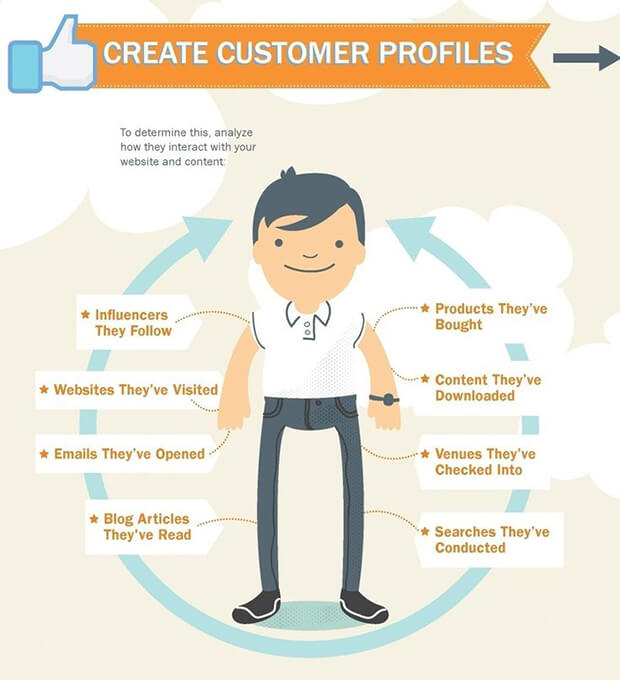
Here’s another example from Digital Marketer:
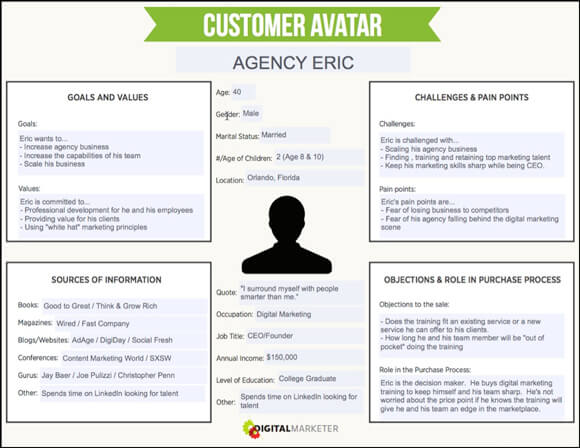
This information will play an important part in developing your overall digital marketing plan. The more detailed your customer avatar, the better you can customize your digital marketing strategy.
Now that you have your customers sorted out, let’s talk about your digital assets.
3. Take Inventory of Your Current Digital Assets

A digital asset has 3 main characteristics:
- It’s stored digital
- It provides value to your company
- It’s searchable and discoverable
When considering your available digital assets as a part of your strategy, you’ll start by taking inventory of your current digital assets. These can be anything from your blog content to paid ads, or even the exposure earned through word-of-mouth.
Digital assets can be owned, earned, or paid. You’ll need to inventory each type and decide which new assets you need for your digital marketing plan.
Owned Digital Assets
Any digital property that you can control and that is unique to your brand is considered an owned digital asset. A common example is your website, but it can also be things like:
- Social media profiles
- Blog content
- Case studies
- Original imagery and infographics
- Digital videos
- Email marketing
Even some of your off-site content, such as posts on Medium or content on GitHub, can be considered an owned digital asset.
It’s important to track owned media so you can get a full understanding of the buzz around your brand. This also gives you an idea of how that impacts your marketing efforts.
You can track social media directly in the analytics of the social media platform you’re using. There are also amazing tools like MonsterInsights that you can use with Google Analytics to get the info you need to track the ROI of your owned media.
Earned Digital Assets
Next, analyze your earned media assets. Earned media is any attention that you’ve earned but not paid for. You can earn media assets a number of ways including the customer service you’ve provided or through the influence of your SEO efforts.
Here are a few examples of earned digital assets:
- Guest posts
- PR
- Customer experience
- Word-of-mouth
- Press mentions
- Reviews
Other examples include user-generated videos and social media mentions. These can be from content writers, journalists, reporters, or even customers.
GoPro has a number of digital marketing examples that include earned digital assets. One of their more popular earned media assets includes YouTube videos made by customers with GoPro’s products.
Every time someone posts a cool video from their GoPro, the company gets a new earned digital asset.
GoPro encourages the practice by offering prizes for this user-generated content in their GoPro Awards. They also share many of the winning videos on their own YouTube channel.
Here’s an example of one award-winner, a spooky Halloween video created by Lukasz Lewenda.
Lukasz shot 100% of the video using GoPro.
Just like we mentioned about owned media, it’s also important to track your earned media. Depending on the type of earned media you’re tracking, there are different tools that can help.
Again, you really can’t go wrong with MonsterInsights and Google Analytics. But, you can also set up simple Google Alerts or Walk Talker Alerts that can notify you anytime your brand is mentioned online.
Here’s an alert preview for “go pro” using Google Alerts:
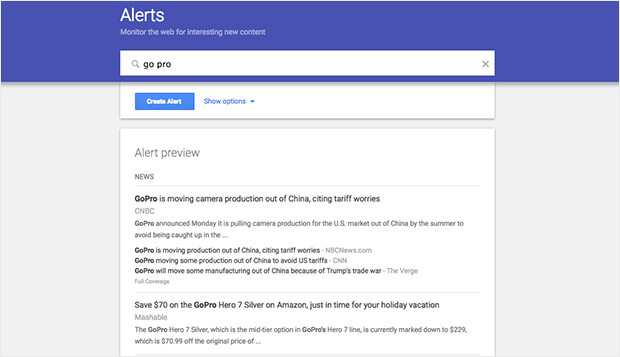
Track and analyze your earned media so you can include it into your overall marketing plan.
Paid Digital Assets
Finally, you’ll want to look at all of your paid assets. Typically, paid media serves as a promotion method to boost your exposure. You can find this anywhere exposure is paid for like:
- Google Ads
- Pay-per-click (PPC) advertising
- Social media ads
- Native ads
- Online video ads
In terms of tracking, a tool like Semrush can track both organic and paid traffic (such as pay-per-click).
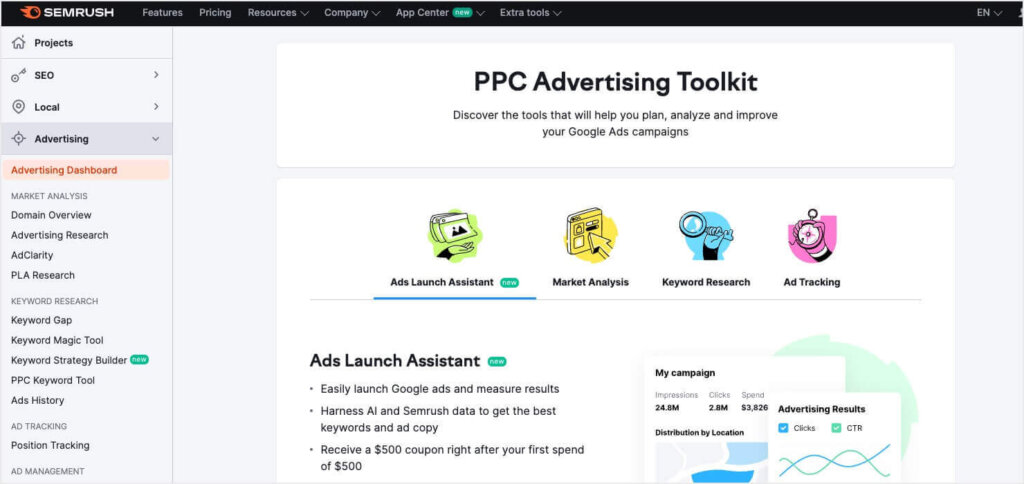
4. Develop New Digital Assets & Decide on Distribution Channels for Your Digital Marketing Plan
Now, you can analyze your goals, customer avatars, and digital assets to decide what’s next. Here are some questions to answer with your marketing team:
- What digital marketing channels do your customer avatars use?
- Which of your existing digital assets be repurposed on these channels?
- What new digital assets do you need to develop?
- What marketing budget will your plan require?
- What time, staff, and resources will your plan require?
- Are you able to accomplish your original goals within the timeline you set? Or should you change it?
Once you answer these questions, you’ll be ready to implement your digital marketing strategy and start working toward your goals.
5. Track Your Metrics & Adjust Your Digital Marketing Strategy Accordingly
In the goal-setting section, I mentioned how important it is for your goals to be measurable. Here’s where that becomes important.
Throughout the time period that you’ve set for your plan, you should monitor your goal metric to see if you’re on-track.
If your goal is to add 750 new email subscribers in 6 months, you’d need to average 125 signups a month. If you only get 50 in your first month, then you probably need to adjust your digital marketing strategy or ramp up your efforts.
For instance, maybe you were using an OptinMonster popup to offer 5% off in exchange for the shopper’s email address.
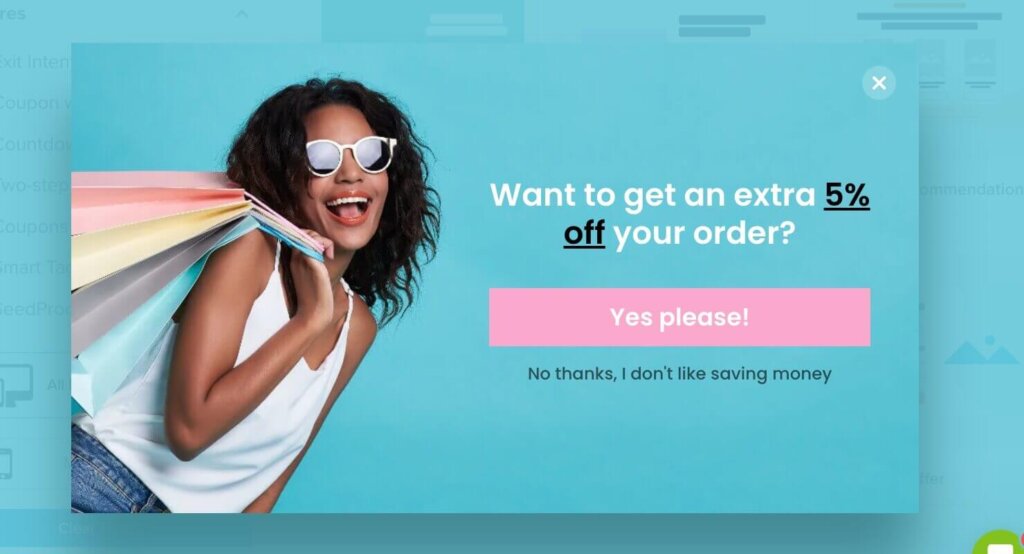
If this popup isn’t getting enough subscribers, you could try increasing the coupon to 10% off or offering free shipping instead.
In short, you should continually monitor and optimize your online marketing plans based on how your metrics are performing.
FAQs
How can I improve conversion rates in my digital marketing plan?
To improve your conversion rates, use techniques such as A/B testing, improving website usability, and creating compelling calls-to-action (CTAs). These tactics will encourage more users to take desired actions, such as purchasing a product or signing up for a newsletter.
What role does search engine optimization (SEO) play in my digital marketing strategy?
SEO is crucial for increasing your website’s visibility on search engines, driving organic traffic, and enhancing your brand’s online presence. Incorporating SEO best practices, like keyword optimization and quality content creation, ensures your digital marketing strategy reaches the right audience.
How can a small business benefit from a digital marketing plan?
A well-crafted digital marketing plan helps small businesses compete with larger companies by reaching a broader audience online. It helps in building brand awareness, generating leads, and converting those leads into customers, often at a lower cost compared to traditional marketing methods.
Boost Your Business With a Killer Digital Marketing Strategy
Now you have a solid digital marketing strategy framework for your business:
- Set clear goals
- Build solid customer avatars
- Inventory your digital assets
- Develop new digital Assets and decide on distribution channels
- Track your metrics and adjust
Want to learn more about developing an online marketing strategy? Here are some resources to help:
- 8 Digital Marketing Best Practices
- The Ultimate Beginner’s Content Marketing Guide
- 45 Best Digital Marketing Tools to Boost Your Business
- Video Marketing Tips to Skyrocket Traffic and Conversions
If your digital marketing plan includes email marketing, OptinMonster is the best way to build a high-quality email list full of engaged subscribers. You can also use our onsite marketing campaigns to keep people on your site longer, offer incentives to buy, recommend products, and more!

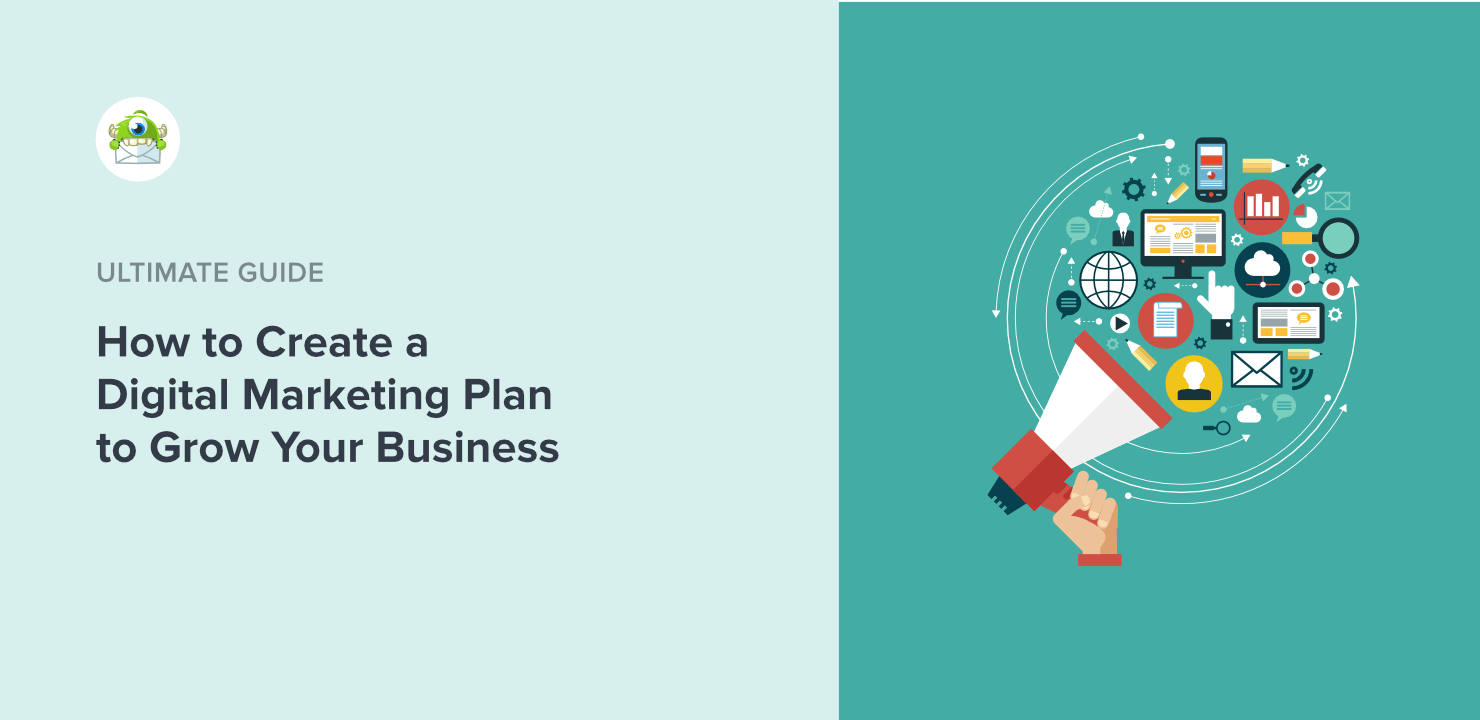









Add a Comment